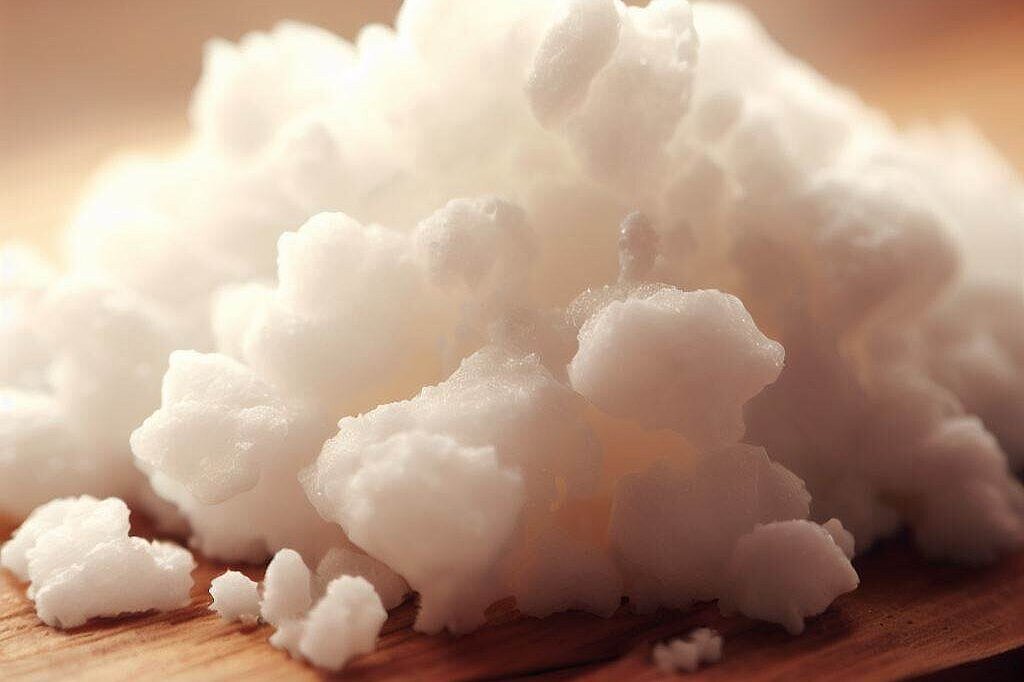Calcium oxide

Calcium oxide is a chemical compound of calcium and oxygen, also known as quicklime or unslaked lime. It is a white, crystalline solid that is used in the construction industry, metallurgy and agriculture, among others. Calcium oxide has a strong alkaline effect and reacts violently with water to form calcium hydroxide (slaked lime).
Why is calcium oxide interesting for dogs?
Calcium is an important mineral for dogs, which is primarily required for bone formation, teeth, muscle function and blood clotting. A lack of calcium can lead to various diseases such as rickets, osteoporosis or milk fever. To cover the calcium requirement, a dog should be given a balanced diet that contains sufficient animal and plant sources of calcium. These include, for example, bones, dairy products, eggshells or green leafy vegetables.
However, calcium oxide is not a natural or suitable source of calcium for dogs. It is a synthetic substance that cannot be absorbed or utilized by the dog's body. On the contrary, calcium oxide can be very dangerous for dogs if it is accidentally eaten or inhaled.
What are the risks of calcium oxide for dogs?
Calcium oxide is a corrosive substance that can cause severe burns to the skin, eyes and mucous membranes. If a dog eats or licks calcium oxide, it can cause severe pain, bleeding, ulcers and necrosis in the mouth, esophagus and gastrointestinal tract. It can also lead to a life-threatening rise in blood pH, which triggers metabolic alkalosis. This leads to an imbalance in the body's acid-base balance, which can cause symptoms such as vomiting, diarrhea, cramps, shortness of breath, cardiac arrhythmia and loss of consciousness.
If a dog inhales calcium oxide, it can cause irritation or burns to the respiratory tract, which can lead to coughing, sneezing, nosebleeds, respiratory distress or pulmonary edema. In severe cases, lung failure may occur.
What to do in case of calcium oxide poisoning?
If you suspect or observe that your dog has eaten or inhaled calcium oxide, you should consult a vet immediately. Do not try to induce vomiting or give your dog water as this could make the situation worse. The vet will initiate appropriate treatment depending on the severity of the poisoning, which may include gastric lavage, infusion therapy or oxygen administration.
To avoid poisoning with calcium oxide, you should make sure that your dog does not have access to this substance. Keep it securely closed and out of your dog's reach and dispose of it properly.
If you notice any signs of hypersensitivity or poisoning in your dog, you should see your vet immediately. We are not a substitute for a vet, but we try to be as accurate as possible. Every dog reacts differently and we recommend you get a second opinion or consult your vet if in doubt.
Stay healthy and take good care of your four-legged friend!😊
Similar to Calcium oxide
Why do dogs need magnesium oxide? Magnesium is a vital mineral for dogs that is involved in many metabolic processes. Magnesium supports the function of nerves, muscles and bones and is important for...
Calcium hydroxide is a chemical compound of calcium and hydroxide ions. It has the formula Ca(OH)2 and is also known as slaked lime or quicklime. It is a white powder that dissolves poorly in water....
Zinc oxide is an inorganic compound consisting of zinc and oxygen. It is known for its strong coverage and protective function in sunscreens, its soothing properties on the skin and its role as an...
Iron oxides are compounds of iron and oxygen that occur naturally or can be produced artificially. They have different colors, from red to brown to black, and are often used as dyes or pigments....



